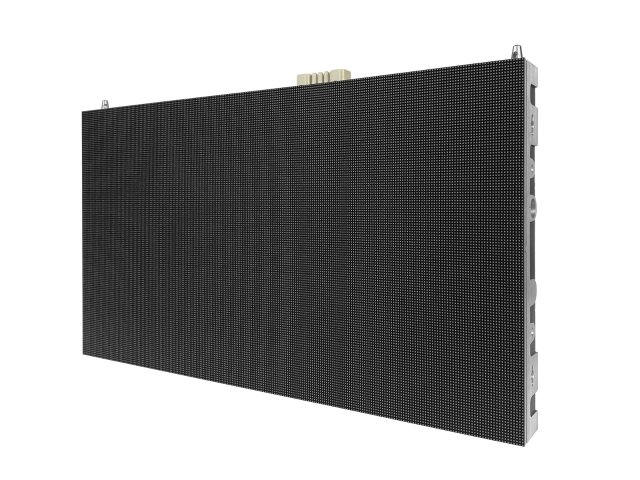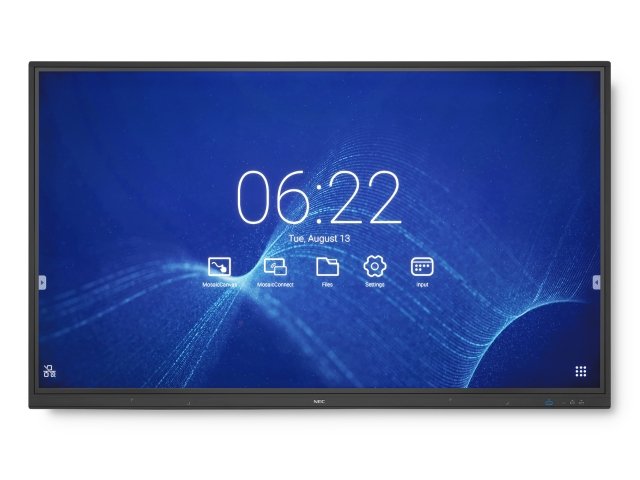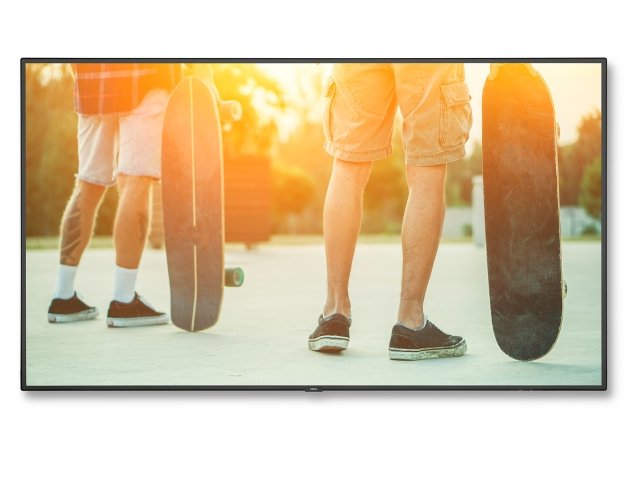Sharp NEC Display Solutions Europe Customer Installation Corporate, Healthcare
Human Performance Institute MOTUM
LED technology makes MOTUM a pioneer in 3D motion analysis
The Human Performance Institute MOTUM makes movement measurable. In the test and experience world in Neu-Rum, Austria, state-of-the-art biomechanical movement analyses are carried out in a scientifically evidence-based setting. The mission: To help people achieve or regain their movement optimum and prevent injuries, thus contributing significantly towards improved performance.
The corporate culture at MOTUM is characterised by a strong drive for research and development and a high standard of excellence. Together with trauma surgeons worldwide, the sports therapy experts provide the best possible advice to top athletes in the fields of football and golf, for instance.
This claim of excellence is also reflected in the equipment of the competence centre in Neu-Rum; MOTUM does not cut any corners when it comes to technology. In order to further revolutionise treatment, the institute was looking for a new comprehensive visualisation solution in 2019. This should not only be “state-of-the-art”, but an industry innovation.
The challenge: large-scale, three-dimensional visualisation in real time
As a basic inspiration for these ambitions, MOTUM followed the example of some centres of excellence located in Italy that were already offering biofeedback training via 2D visualisation using plasma screens.
“From the very beginning, we saw the potential to further develop these 2D representations and transfer them into a three-dimensional space”, says Stefan Mair, Managing Partner at MOTUM. “Because this is the only way we can live up to our high surgical as well as scientific standards of excellence and provide our patients with the best possible advice. So we experimented with many different display technologies, including laser projection and virtual and augmented reality.”
The challenge here was to achieve the cleanest possible qualitative measurements of the movements with the help of the technologies used, which depicted reality in great detail. “We often had to struggle with the fact that the actual movements of the athletes in a competitive setting could not be faithfully reproduced in the laboratory and the movement analyses were thus falsified. So our goal was to build the lab as close to the field as possible in order to be able to replicate real game and external focus scenarios – thereby allowing us to analyse real movement sequences and then optimise them”, adds Dr Gerda Strutzenberger, Head of Lab and Scientific Lead at MOTUM.
“In the redesign process of the lab, we knew very well what we wanted after some time collaborating with our partners Gelenkpunkt – a specialist practice for orthopaedics, trauma surgery and sports traumatology – and Sporttherapie Huber & Mair. What we lacked was expertise in technology. So we looked for the appropriate partners. That’s how Gendo GmbH and Sharp/NEC came on board to advise us in the decision-making process”, explains Mair.
“MOTUM’s application scenario resulted in extensive demands on the corresponding technology”, says Oliver Bauer, Regional Sales Manager Austria at Sharp/NEC. “We had to develop a visualisation solution for a biomechanical laboratory that would present the data captured by force measurement and contact plates in the floor as well as infrared cameras in an accessible way. In addition, the solution had to be large-scale and qualitatively detailed enough so that a person from some distance can easily recognise the respective game scenario as well as themself in it and interact with it in real time – accordingly, there could not be any time shifts either.”
The solution: trend-setting LED technology for innovative diagnostics and consulting
Some basic requirements in the MOTUM building quickly ruled out the use of laser projection: The infrared rays for measuring movement would negatively influence the light emitted by the projector and thus the accuracy of the projection. The structural conditions posed another challenge, because the large windows in MOTUM’s premises could not be sufficiently darkened to create a clean projection surface. So it was clear early on that the most suitable technology for this scenario was the LED. It can be used to create particularly bright, high-quality and vivid images with rich colours and no distracting frames, even in incident daylight – precisely the criteria that MOTUM originally defined.
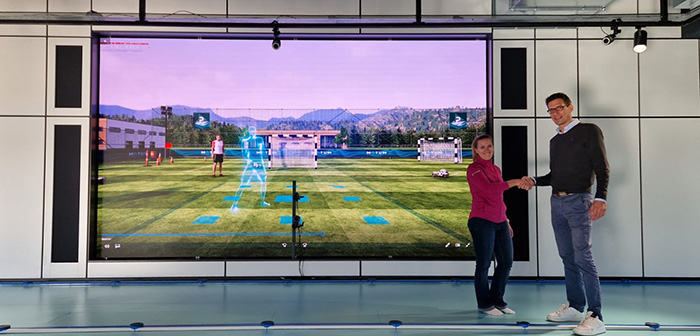
In addition, detailed running analyses take place in the LED wall area with the help of a treadmill. Here, too, IMU sensors measure the movements of the athletes, who receive live feedback on their performance via an upstream LFD from Sharp/NEC. Accordingly, they can adjust their movements in real time and notice improvements immediately. For debriefings of the analyses with the patients, solutions such as the NEC CB651Q-2 with interactive whiteboard are available in the individual offices at MOTUM. These not only enable effective on-site meetings, but also facilitate hybrid video conferencing with patients around the world.
So Sharp/NEC invited those involved from MOTUM, Gelenkpunkt and Sporttherapie Huber & Mair to spend a day at its LED Solutions Center in Schwanstetten near Nuremberg. There, those involved in the project were able to see the future-oriented technology for themselves and choose the right solution from the various models available as well as pixel pitches. “During the visit to the Solutions Centre, we were able to work together to ensure that the perfect solution was deployed that ideally met all customer requirements”, says Bauer. “This time was well invested for all of us.”
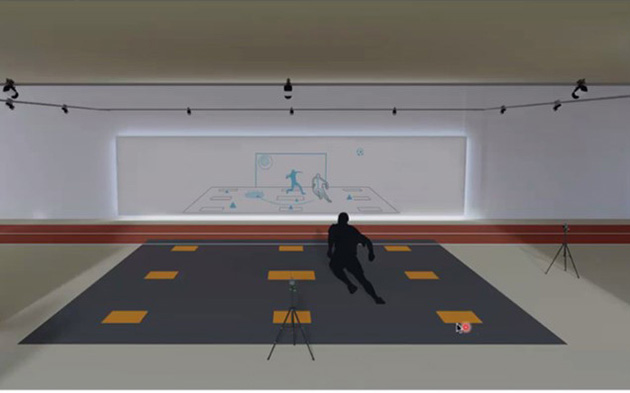
Together, the partners ultimately chose the NEC LED FE series (1.9 mm pixel pitch). This provides MOTUM with uniform, vibrant colours and first-class luminosity at wide viewing angles – and on a scalable digital surface that can be flexibly adapted to local conditions to make ideal use of the available space. The slim, attractive design also fits perfectly with the modernity goals of the competence centre. Last but not least, the FE series is durable and efficient over the long term with a service life of up to 100,000 hours. Thanks to the modular design of the indoor solution and the maintenance access at the front, individual pixel cards can be replaced quickly and easily if damaged by sports equipment or athletes.
The result: a showcase project in LED quality
Today, the 5x3-metre LED wall in the MOTUM laboratory is both a centrepiece and a real eye-catcher. “It immediately attracts attention and is an absolute pioneer project in the field of 3D diagnostics, movement analysis and performance optimisation. With this technological setup, we can now bring Mixed Reality to the screen and have thus created an absolute showcase project in the industry”, says Strutzenberger.
But the inventive spirit does not end here – with the help of other visualisation solutions from Sharp/NEC, additional sub-projects were created: “We asked ourselves what else was possible in the area of diagnostics and performance analysis”, Mair adds. “So we thought about how we could use the LED wall to show one of the most complicated movements in sport: the golf swing. However, the challenge of how to protect the LED wall from the (golf) ball without losing elegance in design and functionalities due to different net constructions presented us with a task that could not yet be solved. In our everyday life, a ball might go astray and damage the panel all too easily. The first time this happened to us, we were able to easily replace the pixel card, but of course this was not a permanent solution. So we set up a separate golf area with more force plates in the floor and a 2D system – that is, with a projection on a moving screen – for biofeedback. Here, we have also installed a Sharp/NEC display for report discussions and live feedback.”
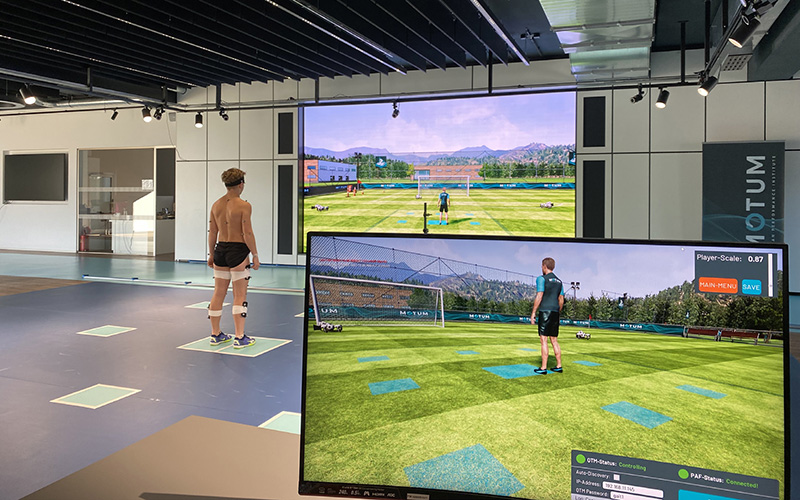
In addition, detailed running analyses take place in the LED wall area with the help of a treadmill. Here, too, IMU sensors measure the movements of the athletes, who receive live feedback on their performance via an upstream LFD from Sharp/NEC. Accordingly, they can adjust their movements in real time and notice improvements immediately. For debriefings of the analyses with the patients, solutions such as the NEC CB651Q-2 with interactive whiteboard are available in the individual offices at MOTUM. These not only enable effective on-site meetings, but also facilitate hybrid video conferencing with patients around the world.
“Such a mammoth project would have been difficult to manage under normal conditions, because there were many stakeholders and partners from different countries to coordinate and the technology had to be ideally coordinated. To manage this under the difficult conditions of the pandemic was an absolute masterpiece. Gendo did an outstanding job here and provided us with exactly the right technology partners – so today the result speaks for itself”, Mair summarises.

